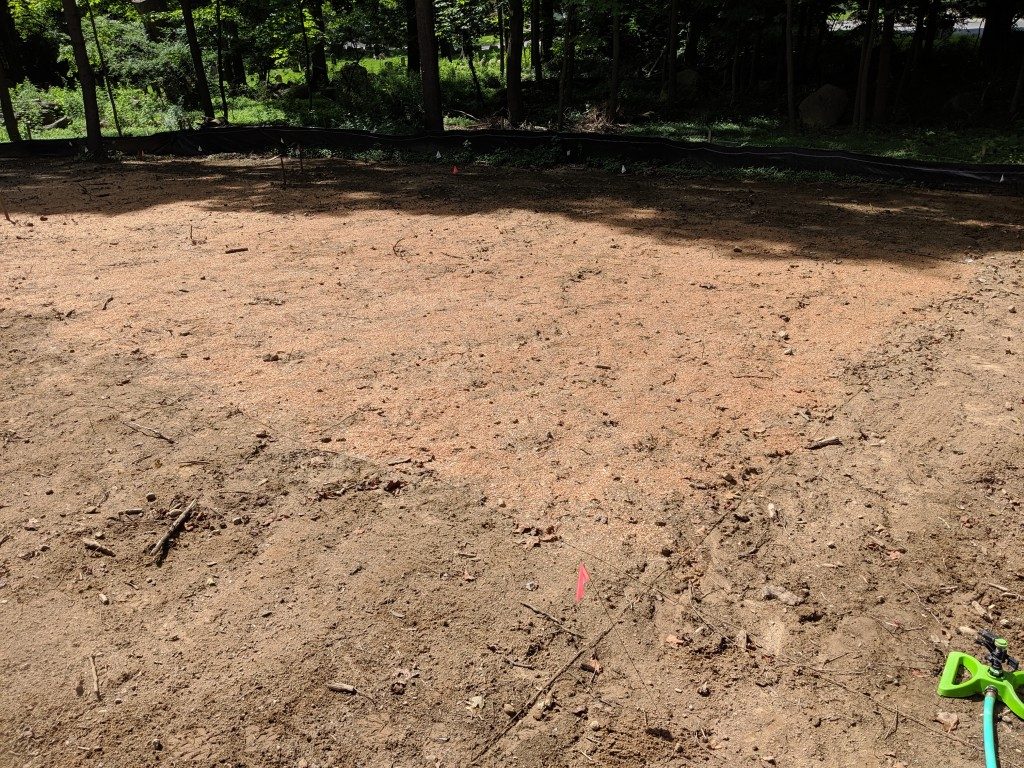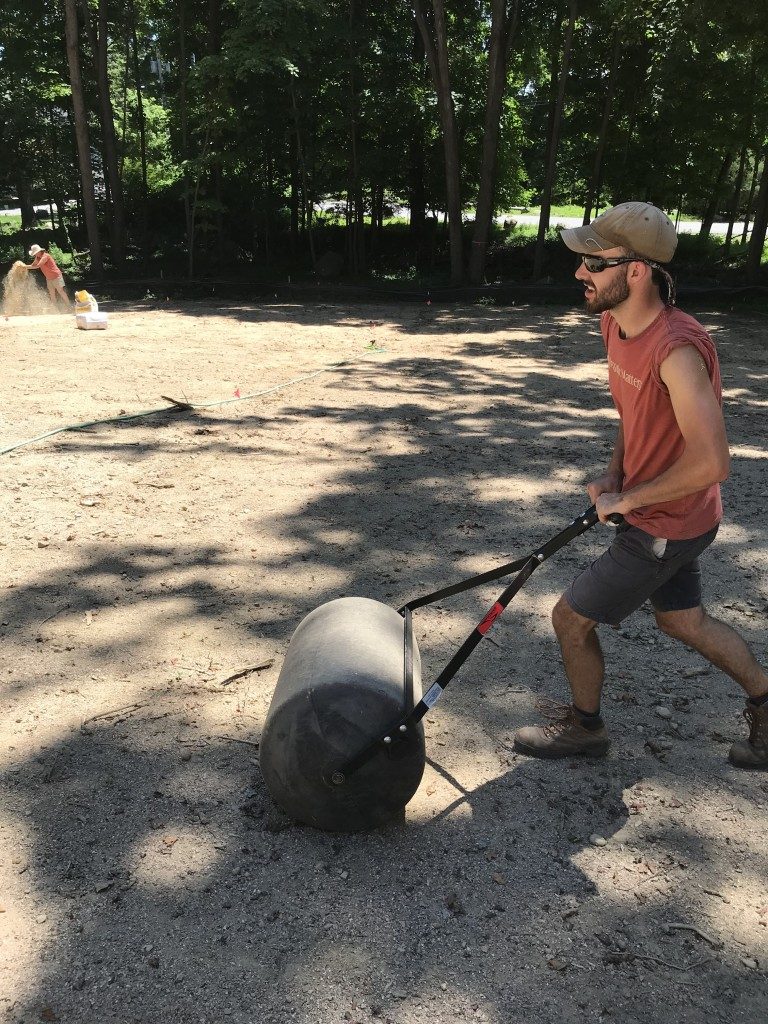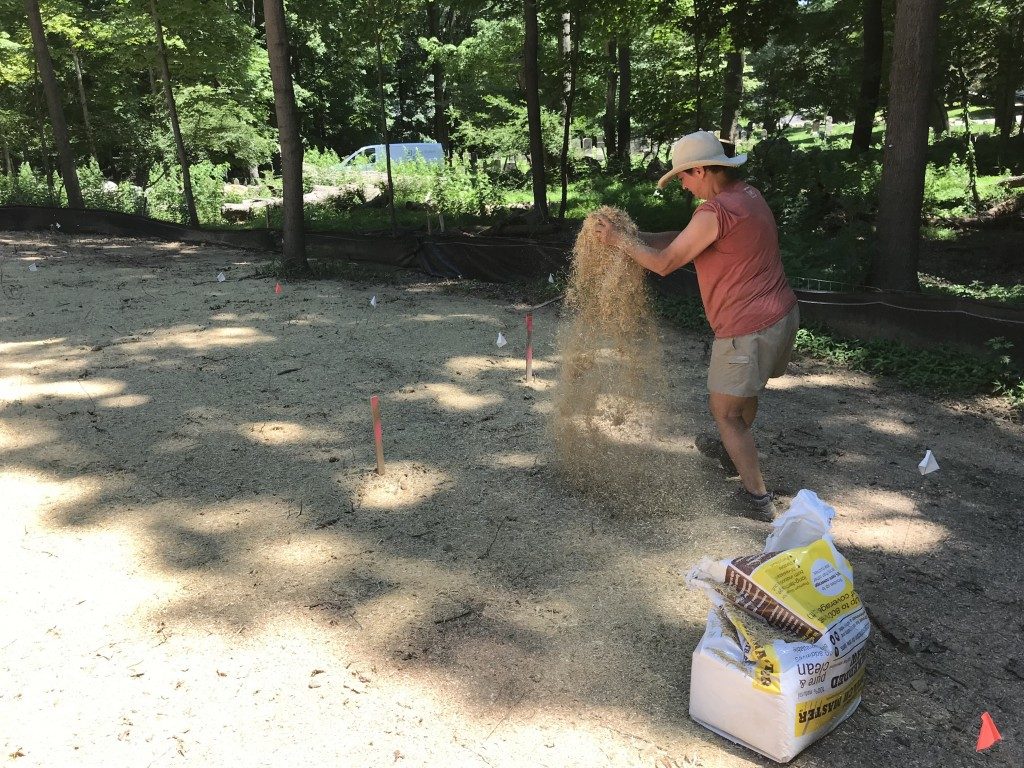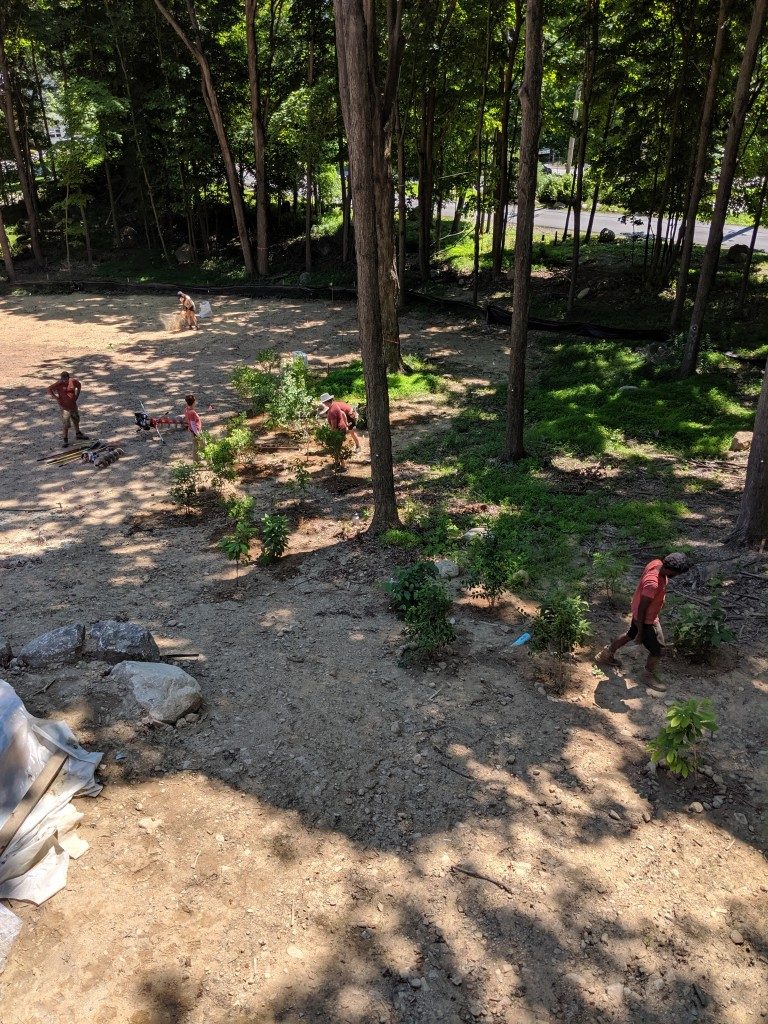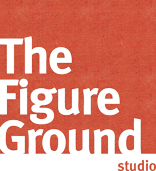Mullet Hall – We Seeded A Native Meadow!

We seeded a meadow!!! We had to clear a larger area than we otherwise would have in order to accommodate our septic system, so we decided to re-vegetate the 7000 square foot bare ground with a native grass and wildflower meadow. We are excited to see how it all grows. This year it won’t look like much as we will be mowing it every 4 weeks to keep the weeds down. Next year will hopefully bring a sea of native grasses and beautiful flowers to feed the pollinators and provide a gorgeous and seasonal wash of color and movement.
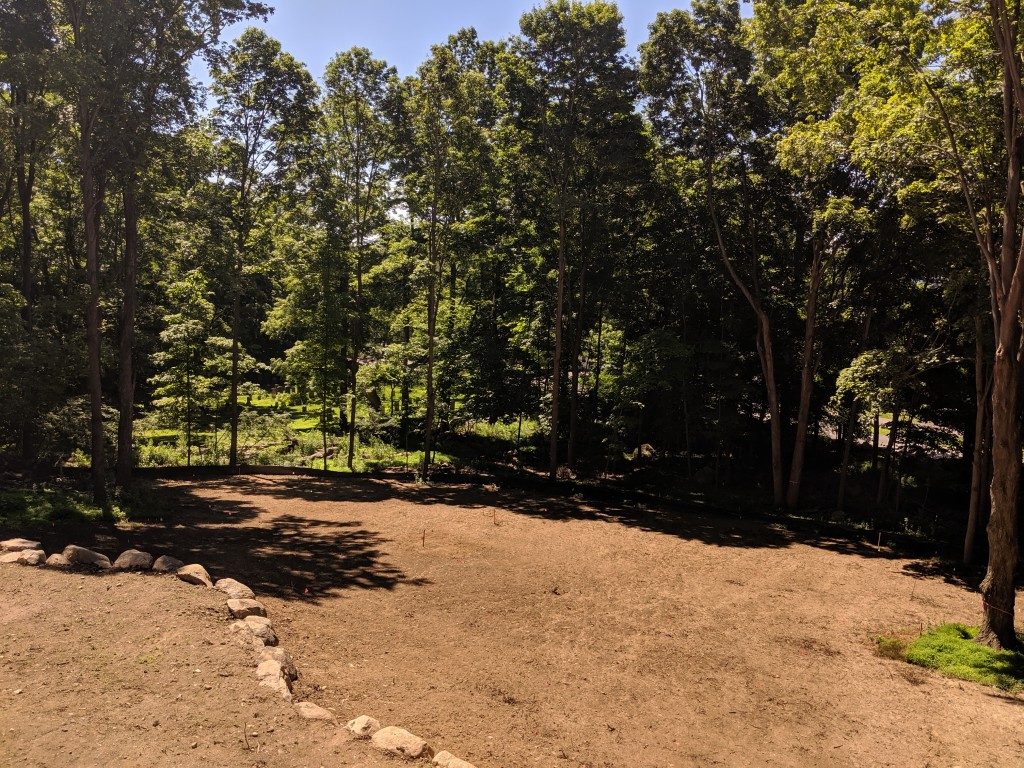
We flame weeded the meadow the day before seeding using a Weed Dragon. The meadow will stabilize the soil by keep the exposed patch from eroding. It will also work in balance with the septic area, growing roots around it, but not such aggressive roots (such as woodies) that will interfere with septic operation.
There are some clear challenges that we hope the meadow will overcome. We seeded the entire area with an understanding that the edges will most likely get less sun than a meadow needs – giving the advantage to the army of weeds waiting to take over. Mugwort, garlic mustard, and stiltgrass are patiently awaiting their opportunity to infiltrate. We have strategies for herbicide-free weed suppression and eventually hope to replace the weeds with native understory trees, shrubs and groundcover. Since we want to enjoy strolling through our meadow, but have to take ticks into serious consideration, we will mow roomy 4-6’ pathways throughout the area to allow for safe passage through it.
Plant Gardens Not Lawns
I do not despise lawn, I despise lawns that are treated with synthetic pesticides, herbicides & fertilizers. These chemicals are detrimental to human health, watershed health, and beneficial insect health – they are detrimental to the health of the plantet. To get on the right track, we need to imagine lawns as floors of organically grown garden rooms with the walls as native trees, shrubs, and perennials. An organic lawn can be a magical place for recreation and relaxation to allow connection with your outdoor space.
Some facts about lawns/lawncare:
- There are an estimated 40 million acres of turf grass in America. More than corn, wheat, and fruit trees combined.*
- 127 million pounds of pesticides are applied yearly by homeowners to lawn and gardens.
- 2-3 times the amount of pesticides are used on a chemically managed acre of home lawns vs. an acre of agriculture*
- Of the 30 most common lawn pesticides, 17 are probable or possible human carcinogens, 11 are linked with birth defects, 19 linked with reproductive effects, 14 associated with neurotoxicity, 24 linked to liver or kidney damage, 25 are sensitizers or irritants, and 18 are endocrine disruptors.*
- 70,000 yearly calls to American Association of Poison Control Center involve common household pesticides.
- 50% of lifetime pesticide exposure occurs during the first 5 years of life.*
*Perfect Earth Project Stat Sheet
To learn more about lawns and how to be responsible in the care for them Perfect Earch Project is a fantastic resource: https://perfectearthproject.org/
The process
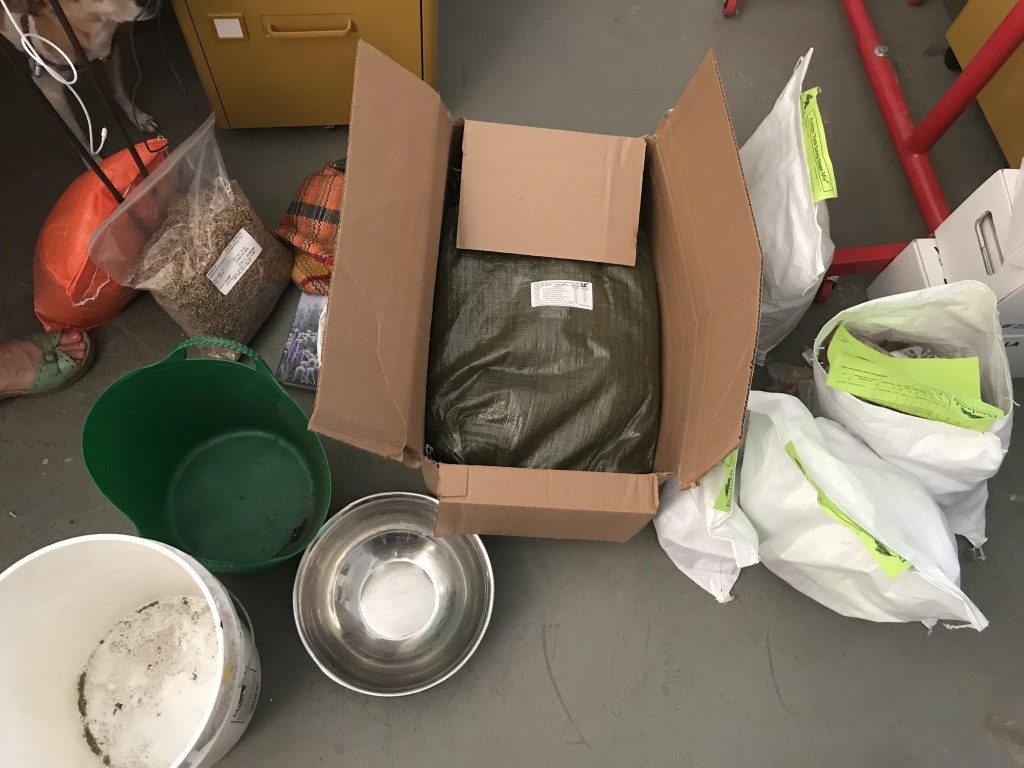
Separating Out Seed Sizes
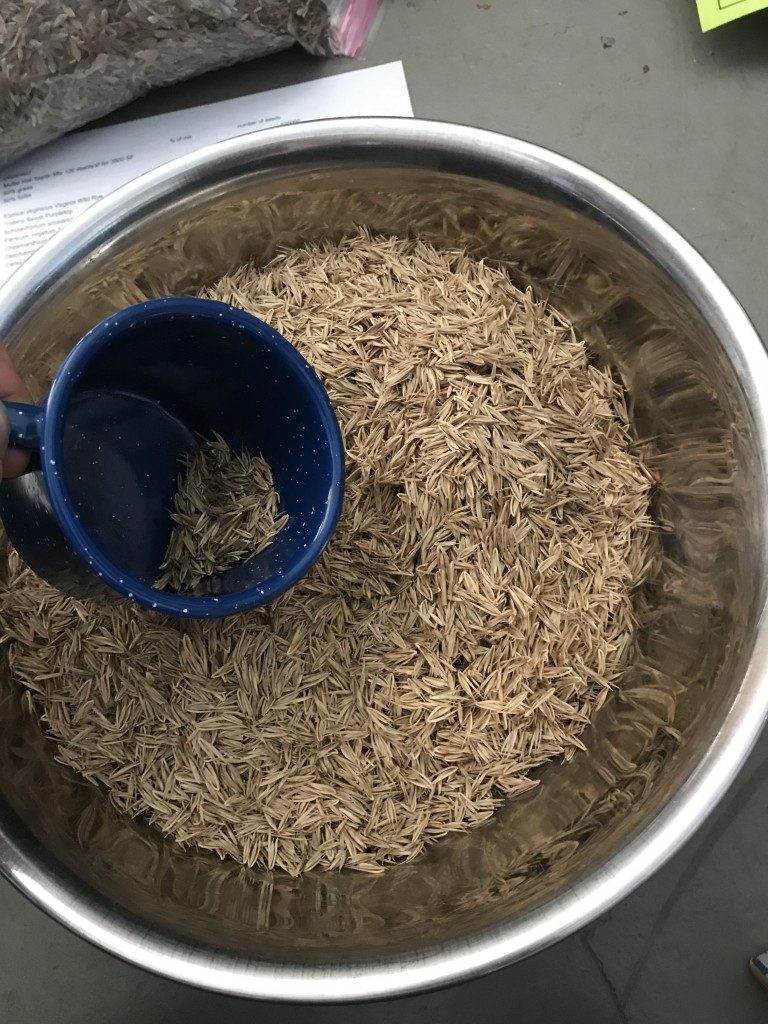
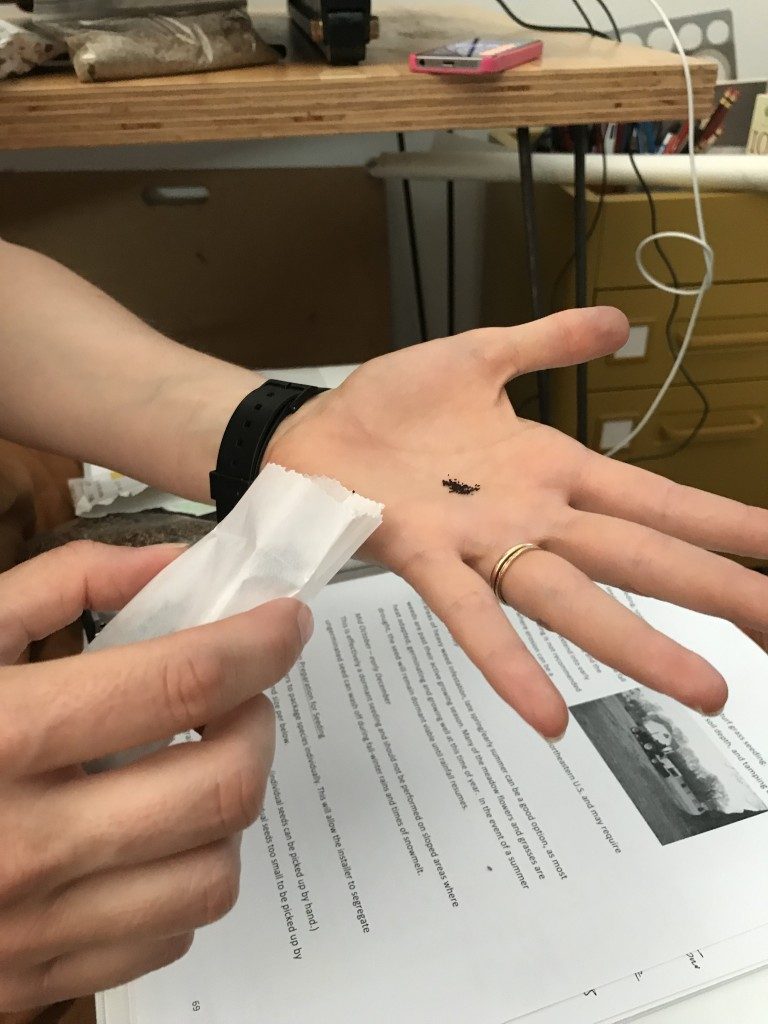
Following our research instructions, we collected “fluffy, small, and grain-sized seed” into one “large seed” group, and finer, smaller seeds we made into a second grouping. We separate the seeds out in this way because the larger will be raked into the ground. Small seeds rest on the surface, and burying them too deep can prevent germination.
Following our research instructions, we collected “fluffy, small, and grain-sized seed” into one “large seed” group, and finer, smaller seeds we made into a second grouping. We separate the seeds out in this way because the larger will be raked into the ground. Small seeds rest on the surface, and burying them too deep can prevent germination.
Measuring
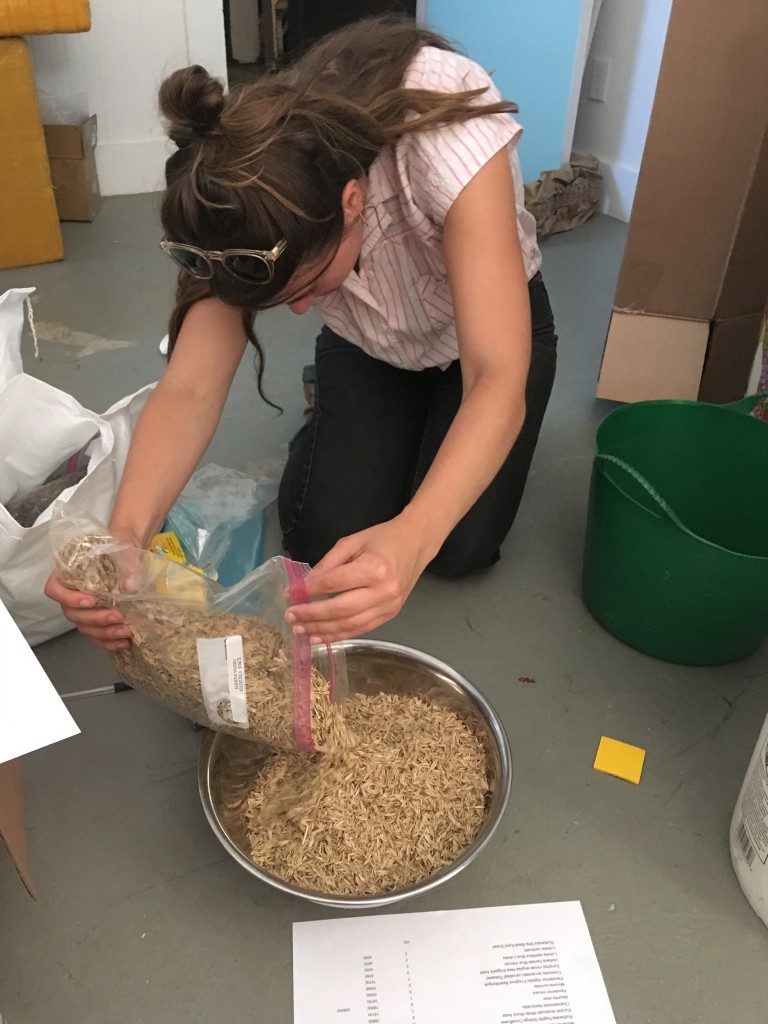
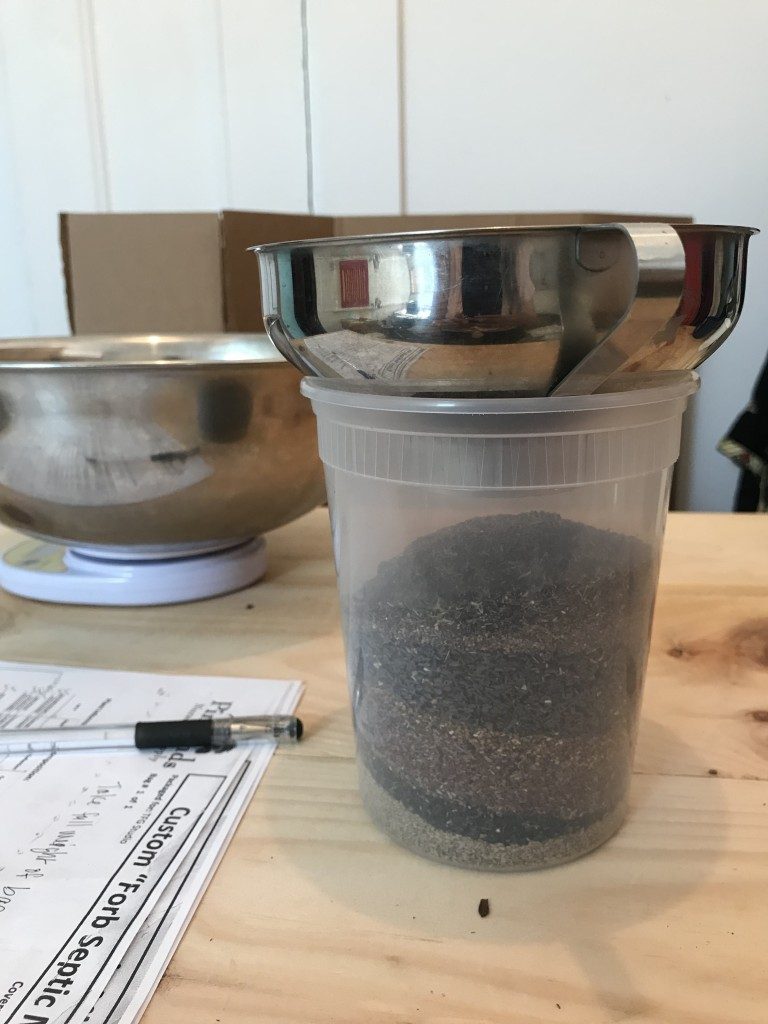
In planning the seeding, we thought it would be easiest to divide our whole meadow area into equal sections. This way, we could spread the seeds by hand evenly, and could weigh out the number of seeds that would be broadcast across each section. Without dividing, we would have trouble figuring out how many seeds should go where, and we would end up with densely seeded areas and some very sparse ones.
To prepare the meadow for seeding, and to ensure roughly requal distribution of seeds, we first measured and flagged the meadow slope into a grid of 9 equal parts.
We then weighed out the seed accordingly into 9 equal parts. We developed different custom seed mixes for the septic area and the sunny slope area in preparation for sowing.
On-Site
We enlisted the help of Organic Matters to assist in the actual seeding of the meadow, and could not have accomplished this without their expertise.

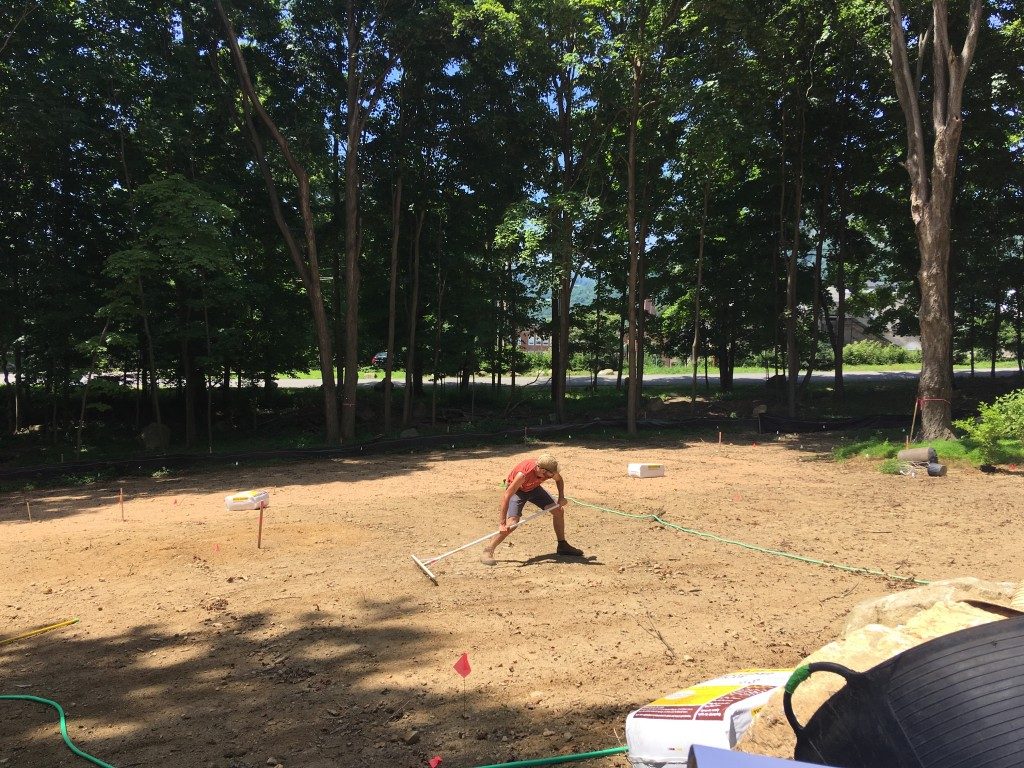
Bulking Agent
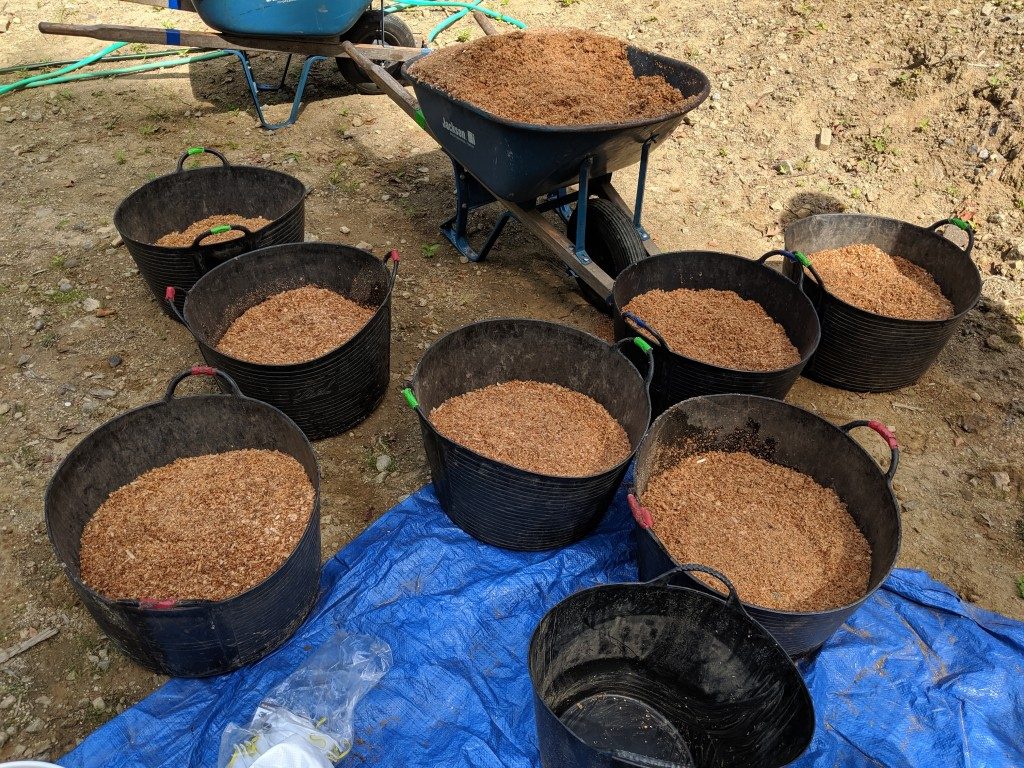
We needed an inactive bulking agent to add to the seed in order to spread it. Some possible bulking agents include sand, sawdust, rice hulls, or cat litter. Mixing them with the seed, as we found out, is helpful to clarify where the seed has been distributed and to make sure there’s an even distribution across area. We debated what would be best to pair with the large seed for some time, where to order it from, etc. Suddenly we realized we had a whole collection of sawdust from our own construction, just sitting in our driveway, going to waste! We shoveled it into wheelbarrows, and it became our primary bulking agent. We milled the trees on our property to use in the house construction and then extended the use of the milled wood by sprinkling it back onto the land. While our research didn’t indicate if our bulking agent had to correlate to our seed size, we went with our gut and paired our small seed with sand, since we felt that the tiny seeds would get lost in the sawdust.
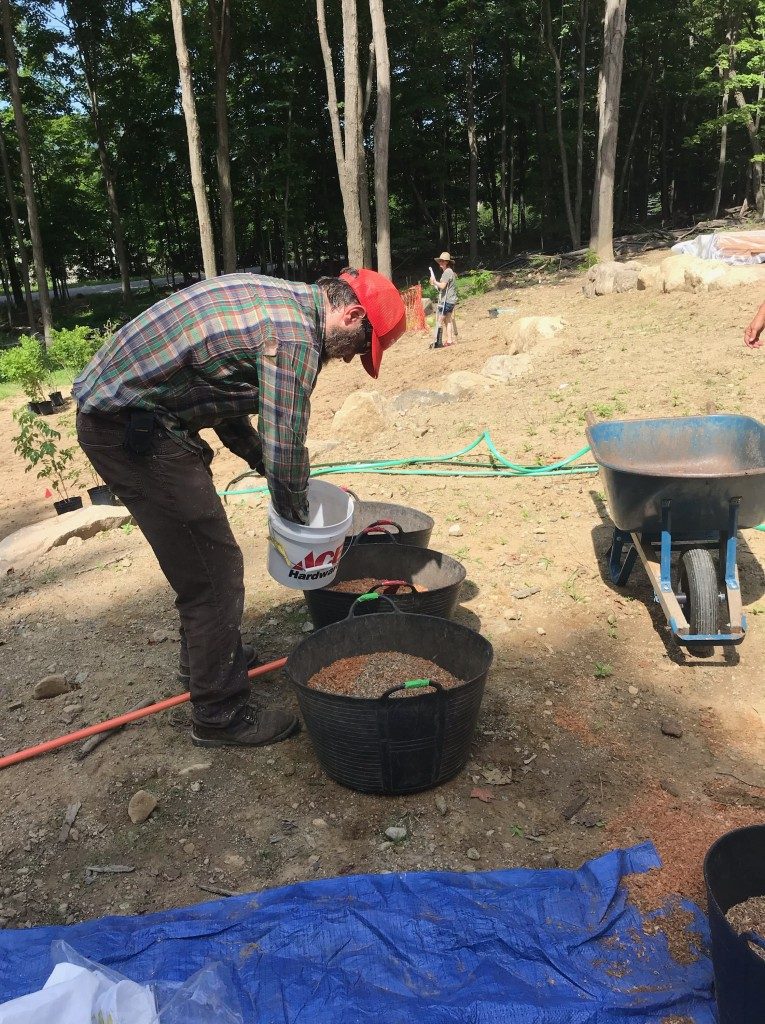

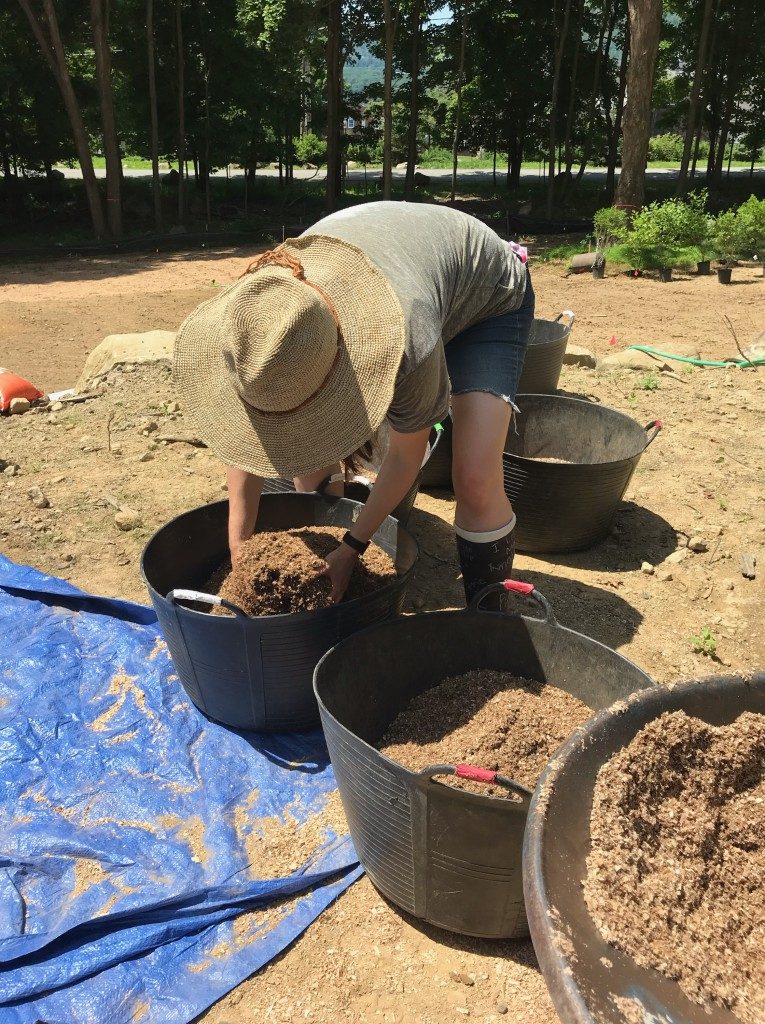
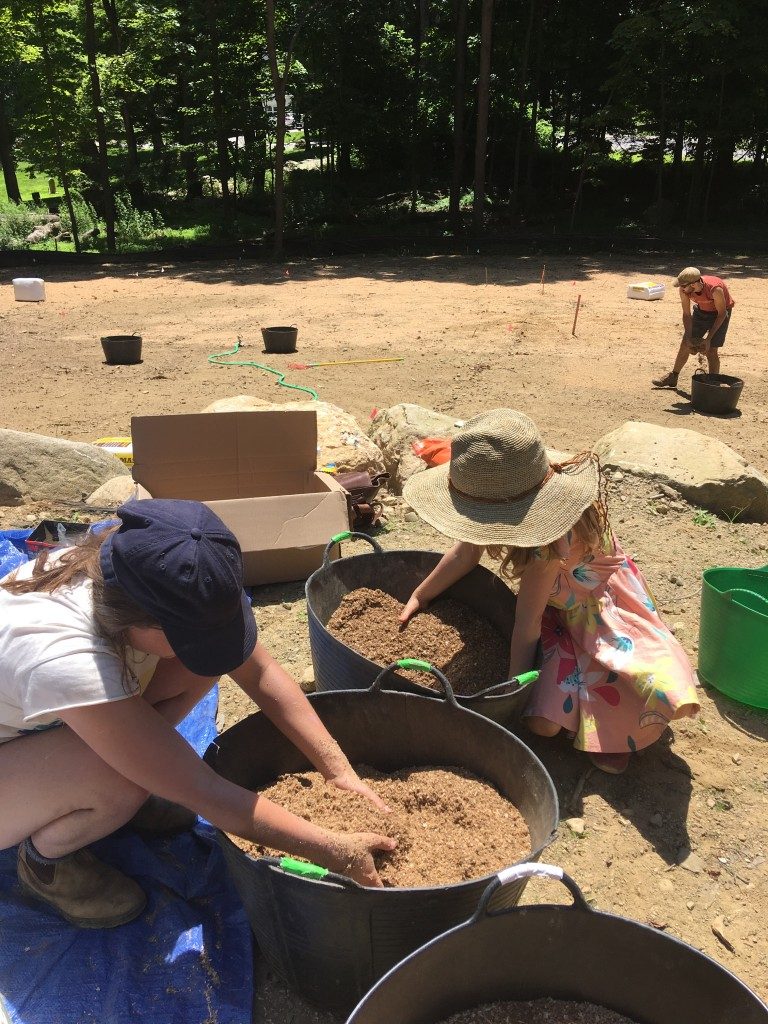
Hand-Broadcasting
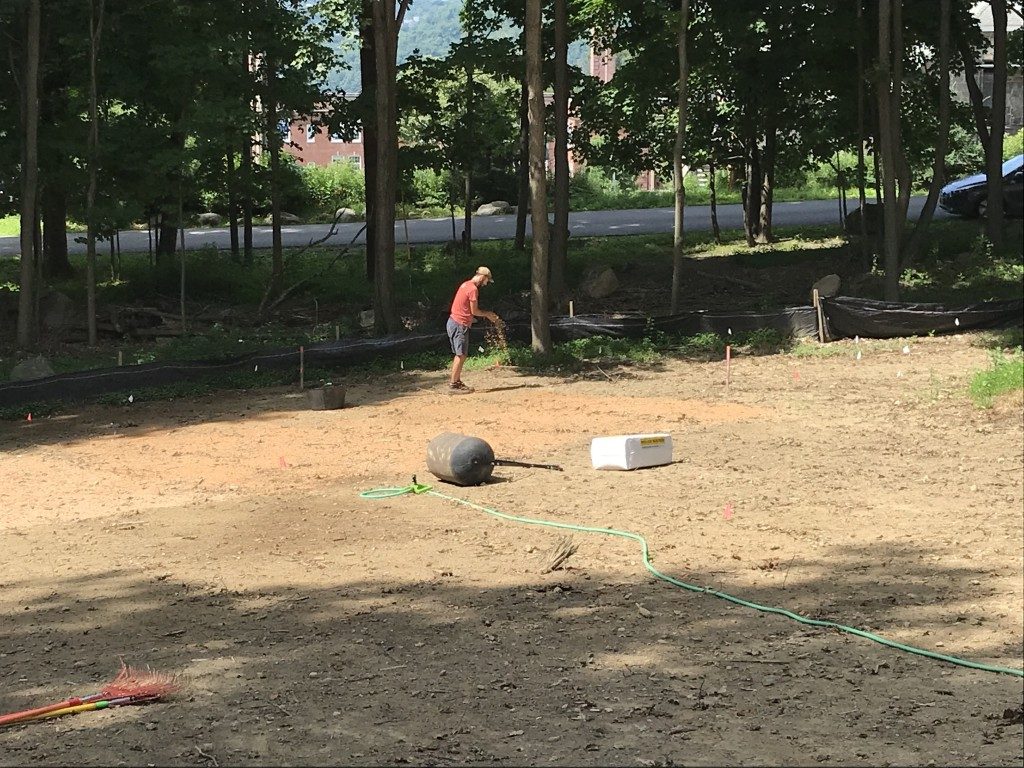
From our research, we found that no-till hand broadcasting is the best strategy for a small, sloping, or wet area, such as ours. We used Larry Weaner’s “Garden Revolution: How Our landscapes Can Be a Source of Environmental Change” as a main resource. I also attended his New Directions in the American Landscape workshops, which was very helpful in the process.
Everyone has a slightly different strategy for distributing seeds evenly: Some shuffle the seeds between their hands while walking across the square…some pitch it, like a discus thrower, in an arc. It was really interesting to see all the different methods and how we all had to find our own rhythm. We are spreading the larger seeds in this shot, which we followed up with back-raking so that they settled into the soil. Weaner’s instructions say not to back rake the smaller seeds, so we didn’t.
